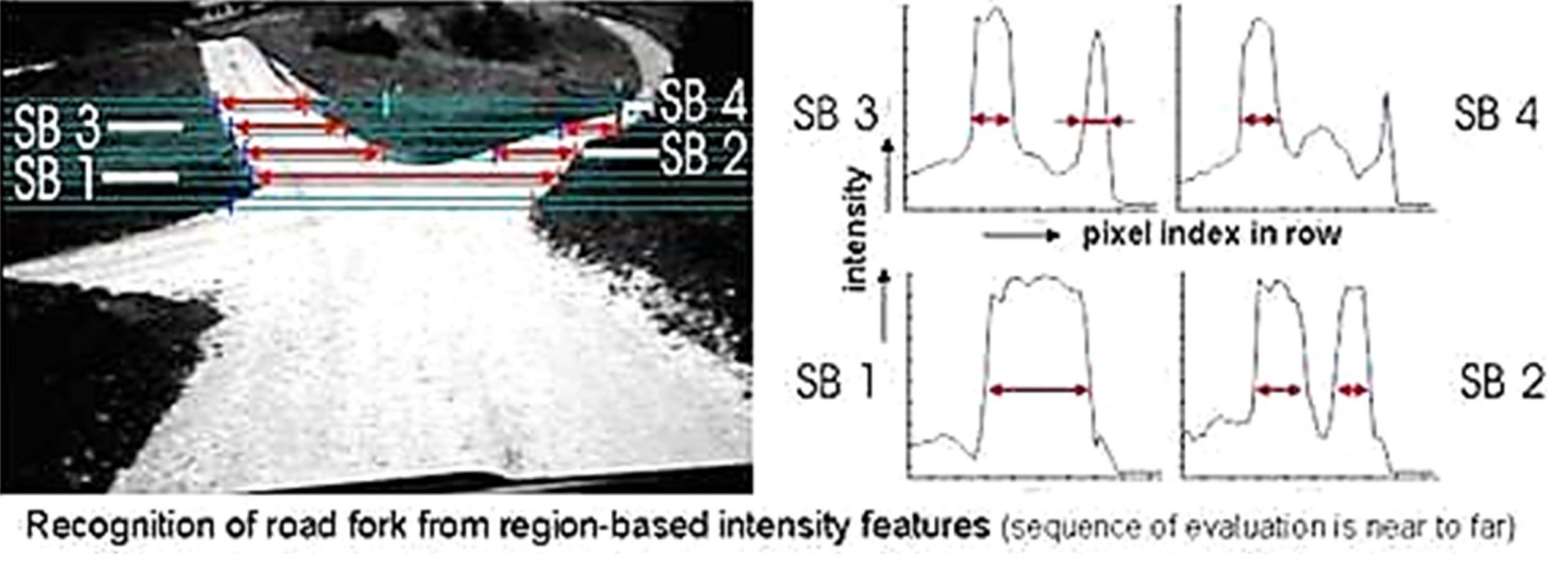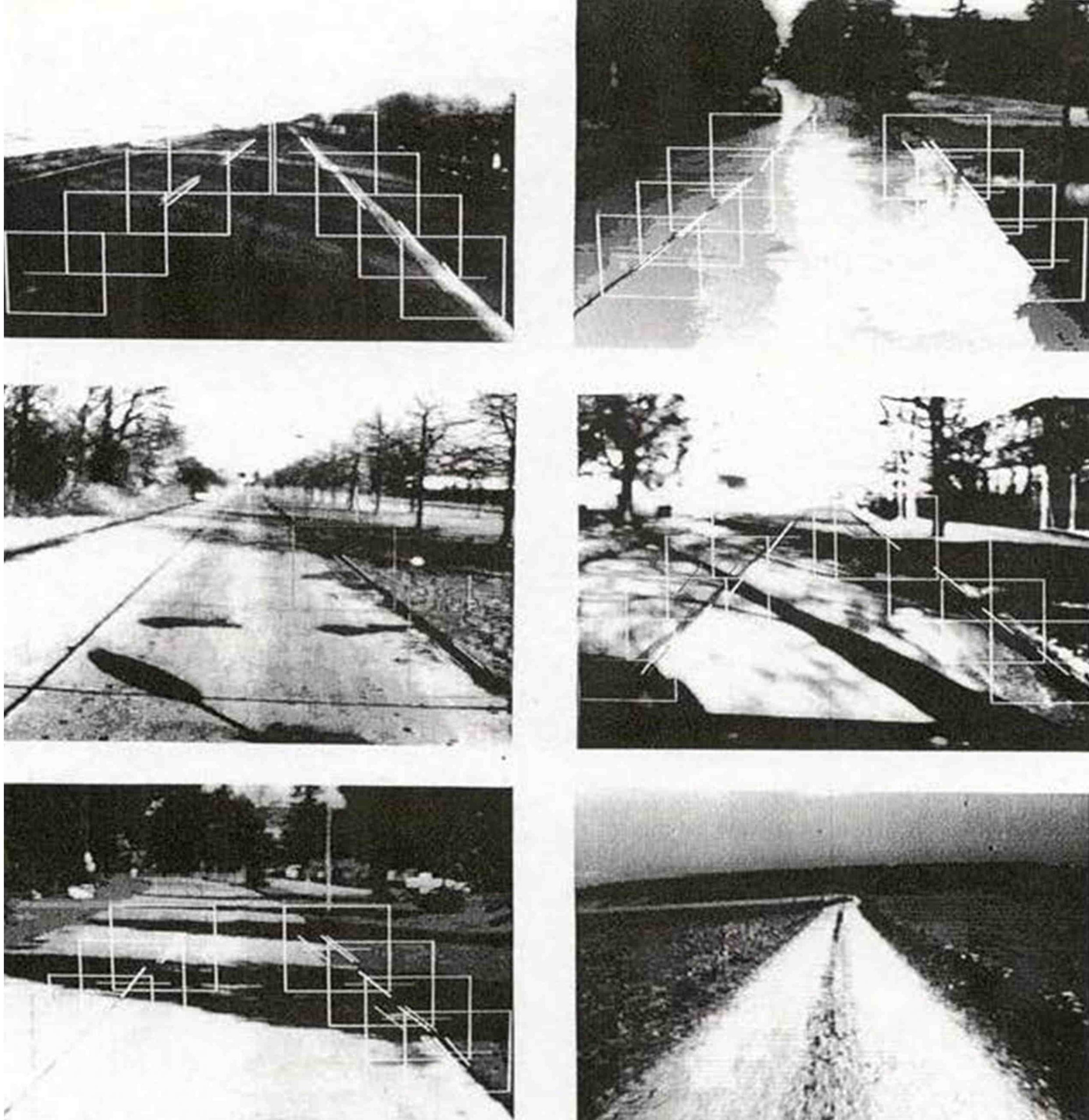- Smooth surfaces with homogeneous appearance and good contrast at the boundaries are the easiest ones.
- If there are buildings or trees near the road and sunshine casts shadows on the road, recognition of the road boundaries may become very difficult; usually, the argument of smooth continuation of road edges gives a good guideline for grouping edge elements. Edge intensity is not a good argument for selection and combination of edge elements.
- Since boundaries of dirt roads are not smooth and crisp but rather jagged, edge detection by large masks with a wide gap between the positive and the negative parts of the mask are favorable.
- Clothoid models are well suited for perceiving these roads also even though they might not have been designed this way.
Video 1990 DissMy.mp4 (initial part)

Road fork recognition
At larger distances, using region-based features is more robust for detecting and tracking roads including road forks (see figure):
References
Mysliwetz B. (1990): Parallelrechner-basierte Bildfolgen-Interpretation zur autonomen Fahrzeugsteuerung. Dissertation, UniBwM / LRT. Kurzfassg
Bruedigam C (1994). Intelligente Fahrmanoever sehender autonomer Fahrzeuge in autobahnaehnlicher Umgebung. Dissertation UniBwM / LRT. Kurzfassg
Behringer R (1996). Visuelle Erkennung und Interpretation des Fahrspurverlaufes durch Rechnersehen für ein autonomes Straßenfahrzeug. Dissertation, UniBwM / LRT. Kurzfassg
Lützeler M, Dickmanns ED (1998). Road recognition with MarVEye. Intern. Conf. on Intelligent Vehicles, Stuttgart.
Gregor R, Lützeler M, Pellkofer M, Siedersberger KH, Dickmanns ED (2000). EMS-Vision: A Perceptual System for Autonomous Vehicles. Proc. Int. Symposium on Intelligent Vehicles (IV’2000), Dearborn, (MI) pdf
Luetzeler M (2002). Fahrbahnerkennung zum Manoevrieren auf Wegenetzen mit aktivem Sehen. Dissertation, UniBwM, LRT. Kurzfassg
Siedersberger K-H (2004). Komponenten zur automatischen Fahrzeugführung in sehenden (semi-) autonomen Fahrzeugen. Dissertation, UniBwM, LRT. Kurzfassg
Dickmanns ED (2007). Dynamic Vision for Perception and Control of Motion. Springer-Verlag, (Section 11.3.4.1)
